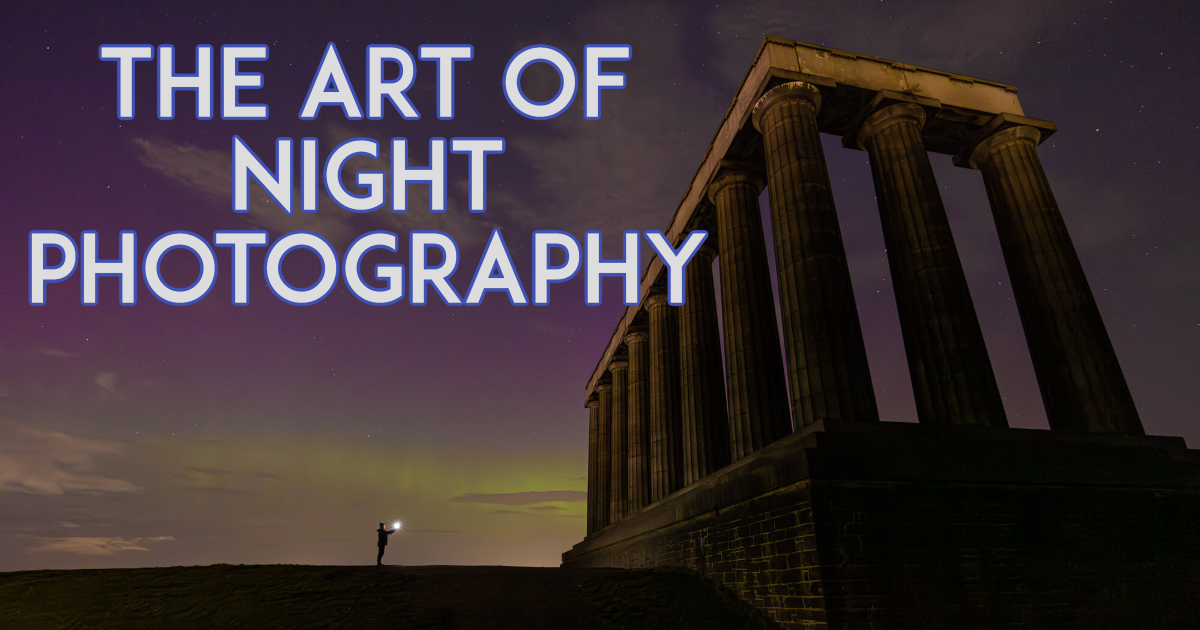September 20, 2023
The Art of Night Photography
Capturing the World in a Different Light. A guide to shooting night photography

Night photography opens up a realm of artistic possibilities that are as enchanting as they are challenging. As the sun sets and the world transforms under the veil of darkness, a new canvas of opportunities emerges for photographers. In this comprehensive guide, we will delve into the intricacies of night photography, from equipment selection to advanced techniques, to help you master this captivating art form.
Embrace the Night: The Magic After Sundown
Night photography unveils a world often overlooked by the naked eye. Artificial lights dance with natural elements to create captivating scenes. The possibilities are endless, from cityscapes adorned with shimmering lights to star-studded landscapes.

Gear Essentials for Night Photography
Selecting the right camera is crucial for night photography. A camera with good low-light performance, high ISO capabilities, and manual controls is essential. Full-frame DSLRs and mirrorless cameras are popular choices due to their superior sensor capabilities.
Fast lenses with wide apertures are invaluable for night photography. They allow more light to hit the sensor, enabling shorter exposure times and reducing the risk of motion blur.
A sturdy tripod is non-negotiable. It provides stability, allowing for long exposures without the risk of camera shake. A remote shutter release minimises camera shake during long exposures, ensuring tack-sharp images.
Mastering Exposure: Finding the Right Balance
Night photography demands a nuanced understanding of exposure. Balancing ISO, aperture, and shutter speed is crucial.
Higher ISO values (800 and above) are sometimes necessary in low-light conditions. However, be mindful of noise and find the optimal ISO setting for your camera.
Wide apertures (lower f-numbers) allow more light to reach the sensor, making them essential for night photography. Experiment with different apertures, focal distances and the distance from the subject to achieve the desired depth of field.
Longer exposures are common in night photography to capture the ambient light. Use a tripod to avoid blurriness caused by camera shake.

Finding Inspiration: Subjects and Settings
Urban environments offer a wealth of opportunities for night photography. The interplay of artificial lights, reflections, and architectural details can create stunning compositions.
Capturing the night sky in all its glory requires careful planning and specialised equipment. Remote locations with minimal light pollution are ideal for astrophotography.
Long exposures open up creative possibilities, from capturing light trails of passing cars to creating ethereal water effects in rivers and oceans.

Artificial lighting, such as street lamps or neon signs, can be harnessed creatively to illuminate subjects in the dark, adding a cinematic flair to portraits.
Techniques and Tips for Night Photography
Achieving sharp focus in low light can be challenging. Use manual focus and focus stacking techniques for optimal results. Additionally, remember to use composition principles like leading lines and framing.
Experiment with white balance settings to achieve the desired mood in your images. Adjustments can be made in post-processing, but getting it right in-camera is advantageous.
High ISO settings may introduce noise—Utilise noise reduction techniques in post-processing to maintain image quality.
Stay Safe
When photographing at night, especially in natural settings, ensure minimal impact on the environment. Avoid disturbing wildlife or trespassing on private property. Also remember to look after your personal safety, especially in urban areas at night. Be aware of your surroundings and avoid risky situations. If you can, take a friend with you when shooting at night.
Unveiling the Nocturnal World
Night photography is an artistic endeavour that invites photographers to explore the world in a different light. You can capture mesmerising scenes with the right equipment, techniques, and a keen eye for composition. Our Night Photography workshop starts again on Sunday, 1 October. Learn some great ways to embrace the night by booking today.

Please give us your feedback.
If you’ve got any questions or comments, leave them below. You can sign up for the Edinburgh Photography Workshop monthly newsletter, where you’ll get regular updates on exciting things happening in photography and some great tips. Sign up by clicking here.
About the author
As well as running Edinburgh Photography Workshop, Rich Dyson is a professional photographer. His photographs are regularly used in newspapers such as The Times, Guardian and Daily Telegraph. He also had two solo exhibitions and was featured in a members-sponsored exhibition in the Scottish Parliament. You can see and buy his photography at richdysonphotography.com.

Find out more about the great filters from Kase